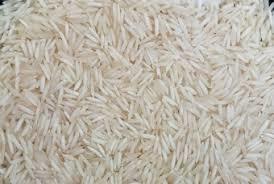
Basmati Rice
Price And Quantity
Product Specifications
Product Description
A long-grain rice that is approximately four times longer than it is wide. Basmati is one of the most popular long-grain rice varieties due to its texture, nutty flavor, and popcorn-like aroma. Much of the basmati rice is cultivated in India and Pakistan. The rice is fluffy and dry and the grains do not stick together after it is cooked. Steaming, boiling, and baking are excellent preparation methods for basmati rice, which can be used in pilafs, salads, and a variety of cooked dishes. Basmati rice combines well with sauces and curries. It is readily available in most large food stores.
FAQ
1. What is basmati rice, exactly?
Ans - Basmati rice is a long-grain rice variety that is well-liked around the world, but is especially well-liked in India and Pakistan. Its grains lengthen and become fluffier when cooked, and it has a nutty flavour and pleasant scent.
2. How is basmati rice prepared?
Ans - There are many other ways to prepare basmati rice, including steaming, boiling, and sauteing. Before cooking, rinse the rice thoroughly to get rid of any dust or debris.
3. How long does basmati rice take to cook?
Ans - Typically, cooking basmati rice on the hob takes 20 minutes. However, based on the technique utilised and the amount of rice being cooked, cooking times may change.
4. Do you need to soak basmati rice before cooking it?
Ans - Although soaking basmati rice before cooking is not required, it might speed up the process. Before draining and cooking the rice, cover it with water and let it soak for 15 to 30 minutes.
5. What are a few of the health advantages of basmati rice?
Ans - Basmati rice is a good source of fibre, protein, and complex carbs. B vitamins, iron, magnesium, and potassium are also present. Eating basmati rice can help with digestion and energy.







